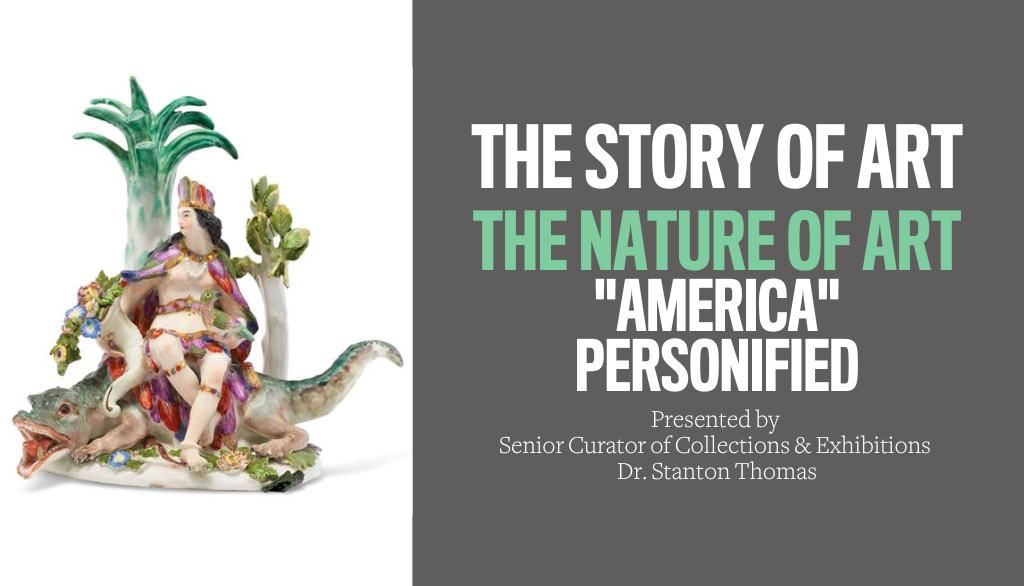

In conjunction with the upcoming The Nature of Art exhibition, this Story of Art segment will examine ways in which U.S. and European artists gave physical form to the so-called "new world." Despite human habitation spanning over 20,000 years, European settlers imposed their own visions and imaginings onto the landscape through their artistic representations. Senior Curator of Collection & Exhibitions Dr. Stanton Thomas will explore an array of imaginative depictions of the natural terrain, unraveling their intricate meanings and cultural nuances.
Particular emphasis will be placed on representations of "America" that employ the female body as allegory, symbolizing an ambitious, visionary ideal of democracy based on European models. During the 19th century, the pure and goddess-like image of “America” functioned as a striking metaphor for what Anglo-European settlers perceived as a boundless, Eden-like expanse of open country waiting to be "civilized."
This talk will explore how images of "America" have changed over time to reflect shifting political agendas, changing ideas about the landscape, perceptions about natural resources, and evolving social ideals.
Image: J.J. Kändler, German, 1706-1775 for Meissen Porcelain Works, Allegorical Figurine of America, c. 1750, Hard past porcelain, Private Collection
Organized by Museum of Fine Arts, St. Petersburg